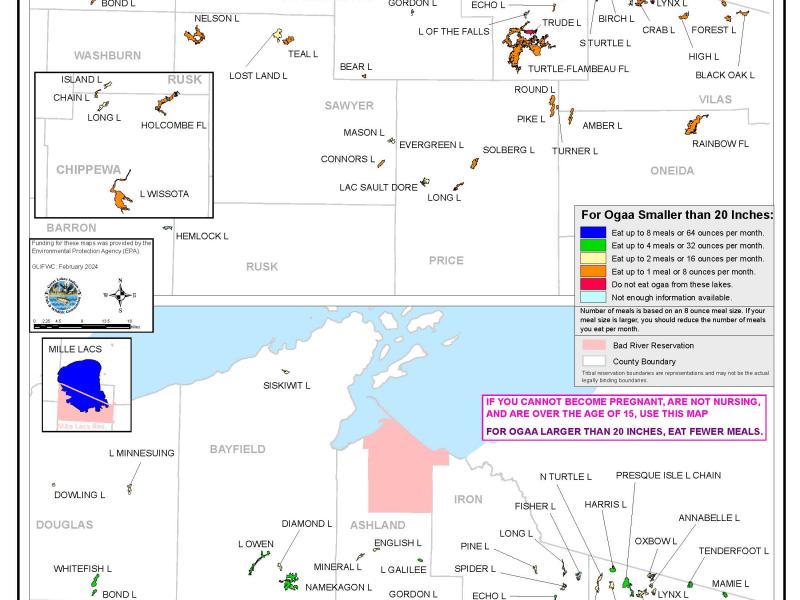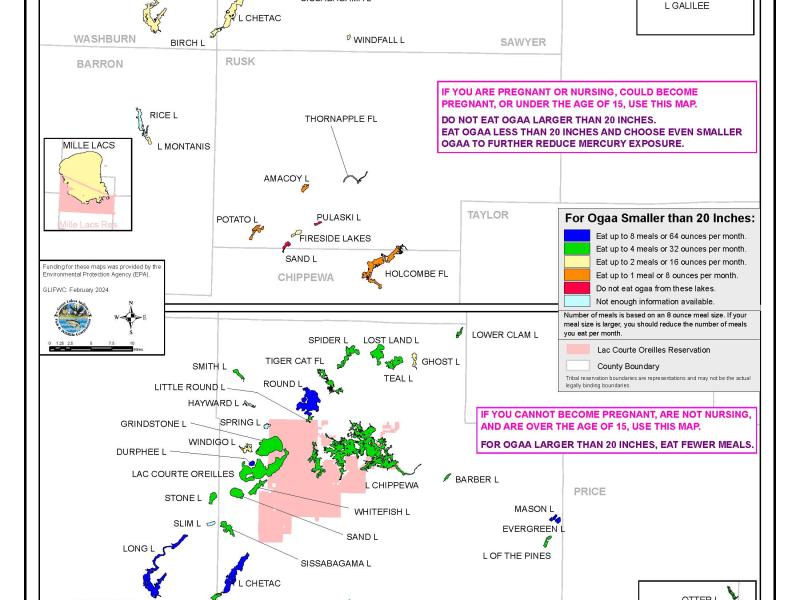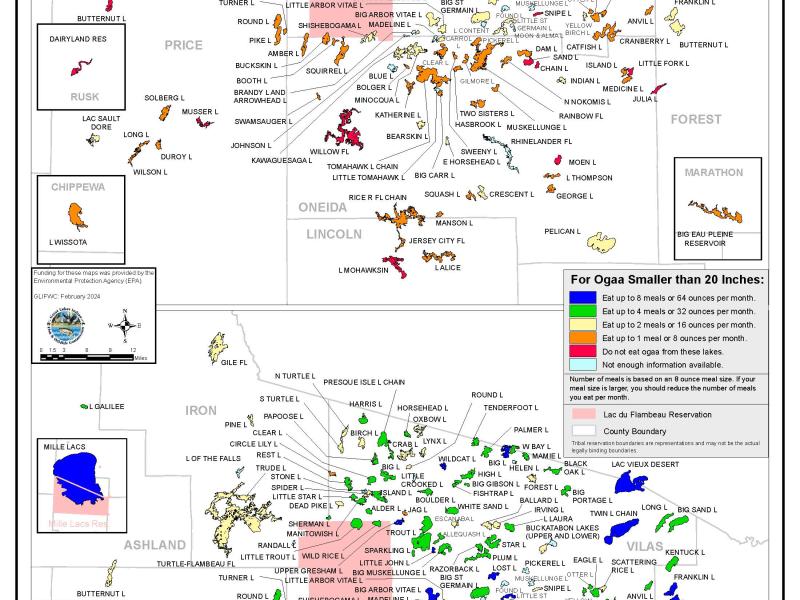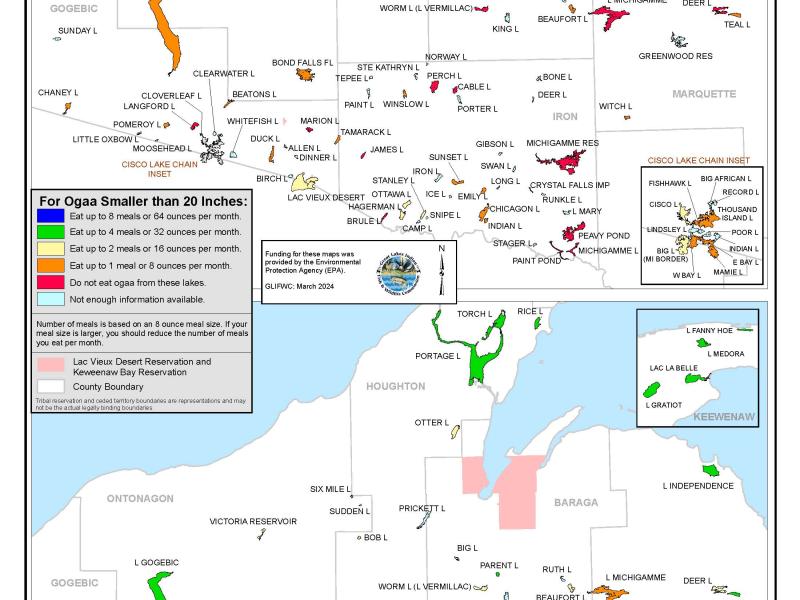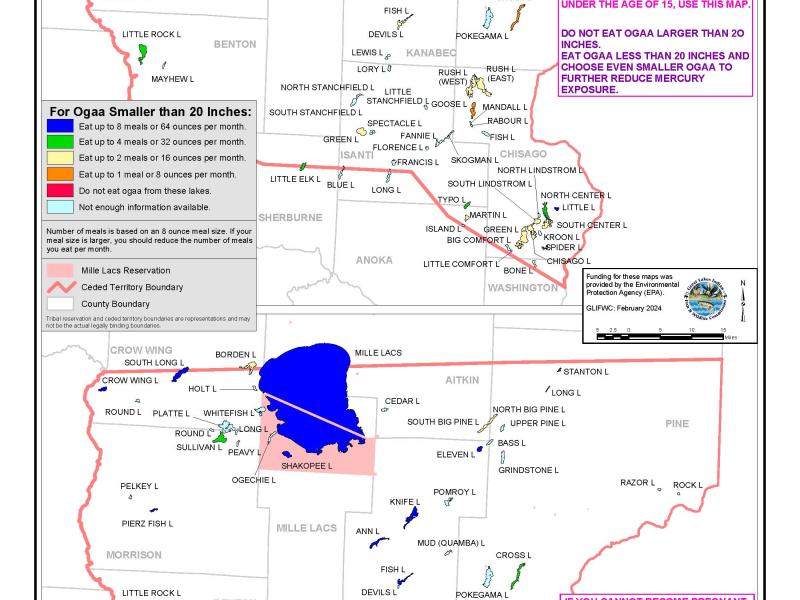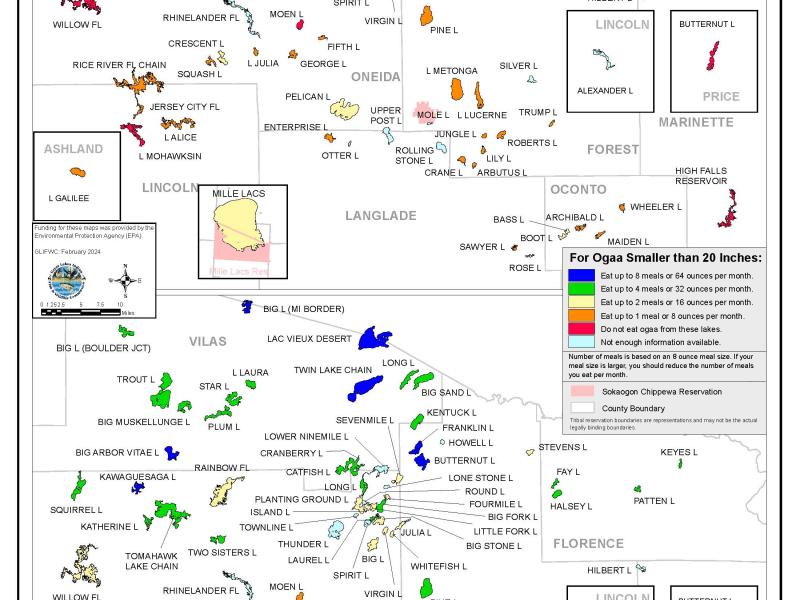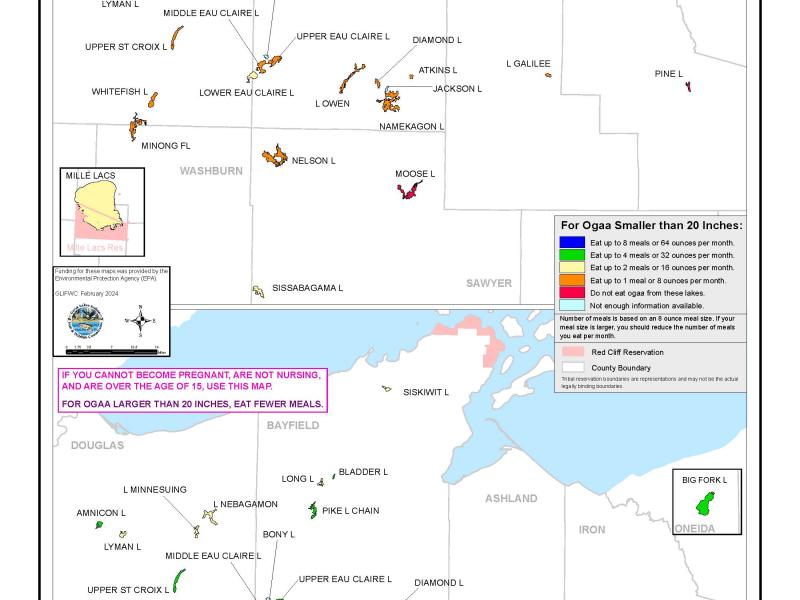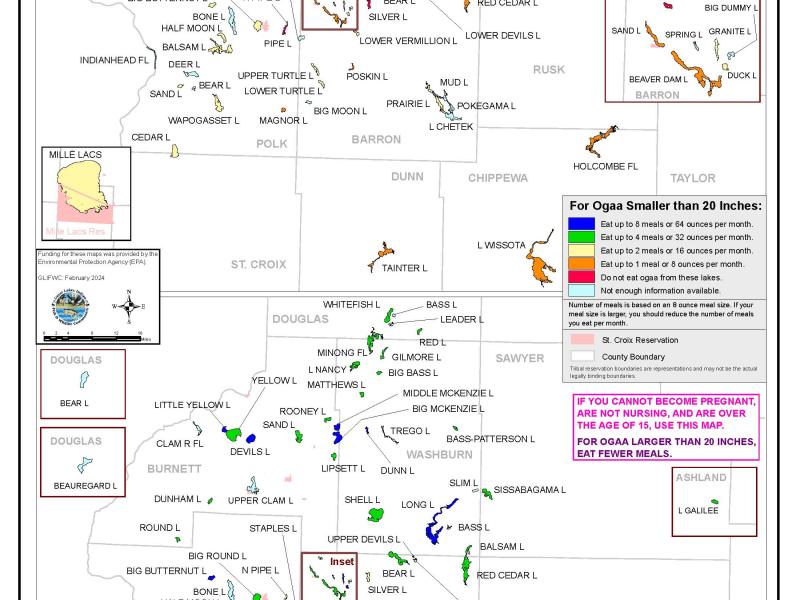The Great Lakes Indian Fish and Wildlife Commission (GLIFWC) plays a crucial role in addressing environmental contamination, including mercury and PFAS (per- and polyfluoroalkyl substances), by conducting research, advocating for policy changes, and supporting tribal communities. GLIFWC works to monitor and reduce the impact of these pollutants on fish and wildlife health. Through its research programs, the Commission provides valuable data on contamination levels in the Great Lakes region, helps tribes assess environmental risks, and pushes for stronger protections to safeguard both the ecosystems and the rights of Indigenous communities. These programs are part of the Environmental Section.
Mercury is a naturally occurring element found in the Earth’s crust, present in coal and other fossil fuels, some minerals and metal ores, and soils. Mercury can be naturally released from rock or soil into the atmosphere during events such as volcanic eruptions or forest fires. Likewise, when people burn fossil fuels for energy, mercury is released and becomes airborne. In the United States, power plants that burn coal to create electricity are the largest source of mercury pollution, accounting for about 44% of all manmade mercury emissions (US Environmental Protection Agency).
Mercury can become an environmental contaminant when it is released into the soil, water, and atmosphere. Airborne mercury can be transported long distances by wind and can fall to the ground (known as atmospheric deposition) in raindrops, dust, or simply due to gravity. Mercury in the environment is converted to the highly-toxic methyl-mercury (often referred to as “mercury”) by bacteria that thrive in environments characterized by high-carbon, sulfate-rich, low oxygen conditions, such as wetlands. It can then move through the aquatic ecosystem into streams and lakes, and into the food web.
Methyl-mercury (mercury) is highly bioavailable, meaning it is readily absorbed by the body when ingested. It is also highly bio-accumulative, meaning it is stored in the body, and the amount in the body increases as more is ingested. This is true for all beings, from snails to fish to birds to humans. Exposure to small amounts of mercury over time from fish consumption can have detrimental effects on human nervous and cardiovascular systems, especially in the rapidly developing systems of fetuses and children.
Other Causes of Mercury
| Burning oil that contains mercury | Burning wood that contains mercury | Burning mercury-containing wastes, including: Wastes from the manufacture of Portland cement | Using certain technologies to produce chlorine | Breaking products that contain mercury |
| Burning iron ore, coke and limestone in electric arc furnaces used to produce steel | Using coal-fired boilers in many industries to generate forms of thermal heat like steam | The burning of municipal and medical waste was once a major source of mercury emissions. A reduction in the use of mercury along with state and federal regulations, however, has led to a decrease in emissions from this source by over 95%. | ||
Fish absorb mercury from water as it passes over their gills and from their food sources as they feed on other aquatic organisms. Mercury levels increase in larger predatory fish as they eat smaller fish, known as bio-magnification. Top predators in inland lakes, such as Musky or Northern Pike, can attain higher levels of mercury than other fish lower in the food web due to bio-accumulation and bio-magnification. This is why GLIFWC recommends eating smaller fish from lower in the food web such as whitefish, herring, bluegill, crappie, perch, or sunfish.
Mercury, in the form of methylmercury, is the primary contaminant of concern in subsistence fish species for GLIFWC’s eleven member tribes. In response to concerns about the health risks to tribal members of consuming contaminated fish, GLIFWC began testing mercury levels in subsistence species in 1989. As of January 2020, GLIFWC has collected and analyzed for mercury over 10,000 fish from Lake Superior and over 300 inland lakes within the Ceded Territories.
GLIFWC began issuing consumption advice in 1996 for walleye, the species most frequently harvested and consumed by tribal members. The advice is based on mercury health risks and uniquely incorporates consideration of impacts on the traditions and culture of GLIFWC’s member tribes (DeWeese et al., 2009). Over the past 24 years, GLIFWC has issued a lake-specific mercury advisory program to help tribal members harvest and consume walleye as part of a healthy and traditional diet. Advice is communicated using lake-specific, color-coded Mercury Maps (Madsen et al., 2008). The Maps combine text and graphics to encourage continued walleye harvest and consumption while limiting mercury intake. GLIFWC’s fish consumption advisory program has positively impacted tribal members’ access to healthy, traditional food, and the health of tribal members by influencing walleye harvest and consumption patterns in ways that reduce mercury exposure.
While mercury has historically been the primary contaminant of concern in fish, especially in inland lakes where the majority of walleye are harvested by tribal members, contamination by per- and poly-fluoroalkyl substances, or PFAS, is an emerging issue that warrants further investigation.
PFAS are a class of thousands of synthetic chemicals that are rapidly gaining attention for their high toxicity at extremely low levels of exposure. Health impacts from PFAS exposure include low birth weight, infertility, certain cancers, thyroid disorders, kidney disease, and decreased immune function and vaccine efficacy, particularly in children.
PFAS are chemical compounds that have been widely used in many industries and consumer products since the 1940s. They have desirable and useful properties of oil-, water- and soil-repellency, and chemical and thermal stability. Common products that contain PFAS include non-stick cookware, stain resistant carpets, waterproof and clothing, fire retardant fabric treatments and firefighting foams. The same chemical and physical properties that make PFAS so useful also make them extremely problematic in the environment.
Due to their repellant qualities, PFAS are easily transported through soil, water, and air, and are therefore difficult to filter out. This, and because they do not easily break down in the environment, are why PFAS have been coined “forever chemicals”. PFAS can be found in industrial waste and discarded consumer products that were made using PFAS, and once in the waste stream, PFAS can move into the environment through landfill drainage, wastewater treatment outflow and runoff from farm fields where PFAS-contaminated biosolids have been spread as fertilizer. PFAS migrate into rivers, lakes and groundwater, and eventually into wildlife and humans.
Known locations of PFAS contamination across the landscape are still relatively limited, including in remote surface waterbodies that are not municipal drinking water sources. PFAS have been shown to bio-accumulate and bio-magnify in the food web, resulting in fish that can exhibit PFAS levels hundreds or thousands of times higher than their surrounding waters (Ren et al., 2023). Of specific concern for GLIFWC member tribes are PFAS levels in lakes where giigoonh (fish) and manoomin (wild rice) are harvested. Progress is being made toward understanding the scope of PFAS contamination, routes of exposure and toxicity levels across the scientific community and beyond.
Monitoring efforts implemented across the Ceded Territories by tribes and states are beginning to uncover sites with elevated levels of PFAS in surface waters and in fish.
There are increasing efforts by multi-agency partners to monitor and assess PFAS contamination across the Great Lakes region. Since fish consumption is the major route of exposure to PFAS for humans, GLIFWC is expanding the Mercury Program by incorporating PFAS testing of fish tissue into this work, enabling us to contribute to the growing body of data that is necessary to form a comprehensive understanding of the scope of PFAS contamination across the Ceded Territories.
